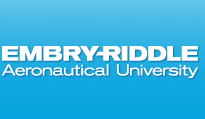Is this project an undergraduate, graduate, or faculty project?
Undergraduate
group
What campus are you from?
Daytona Beach
Authors' Class Standing
Grayson Hayes, Junior Kassandra J. Durst, Senior Amanda Chrystal Varela Medina, Senior Donal Tuten, Junior
Lead Presenter's Name
Grayson Hayes
Faculty Mentor Name
Dr. Surabhi Singh
Abstract
The aim of this project is to better understand the effects of Nozzle Pressure Ratios (NPRs) on the aerodynamics and performance of planar nozzles. Nozzles such as these are commonly used in aircraft and rocket engines, and by studying the effects of different NPRs, the performance of these engines can be improved. The NPR of a nozzle is the ratio of the inlet pressure to the outlet pressure of a nozzle. The NPR can affect the expansion of a nozzle as to whether the plume fully expands to its design conditions, underexpands, or overexpands. The design condition for a nozzle is the pressure ratio at which the nozzle will fully-expand to a speed greater than Mach 1 and no separation of the flow will take place. Using a Mach 2 nozzle, this project will use Z-type schlieren, an optical measurement and visualization technique, to gather both quantitative and qualitative data of the effects of NPRs. Coupled with computational fluid dynamics (CFD) simulations, these effects can be properly documented and reported on for several different parameters. Most notably in an overexpanded condition, the frequency of the separation shock within the nozzle can be documented and compared throughout different cases. Overall, the data gathered from this project can be applied to a variety of fields. Most notably, the application of this data to hypersonic vehicles will allow for estimation of performance decay as atmospheric conditions move away from design.
Did this research project receive funding support from the Office of Undergraduate Research.
Yes, Student Internal Grant
Effects of Nozzle Pressure Ratios on the Aerodynamics and Performance of Rocket Engines
The aim of this project is to better understand the effects of Nozzle Pressure Ratios (NPRs) on the aerodynamics and performance of planar nozzles. Nozzles such as these are commonly used in aircraft and rocket engines, and by studying the effects of different NPRs, the performance of these engines can be improved. The NPR of a nozzle is the ratio of the inlet pressure to the outlet pressure of a nozzle. The NPR can affect the expansion of a nozzle as to whether the plume fully expands to its design conditions, underexpands, or overexpands. The design condition for a nozzle is the pressure ratio at which the nozzle will fully-expand to a speed greater than Mach 1 and no separation of the flow will take place. Using a Mach 2 nozzle, this project will use Z-type schlieren, an optical measurement and visualization technique, to gather both quantitative and qualitative data of the effects of NPRs. Coupled with computational fluid dynamics (CFD) simulations, these effects can be properly documented and reported on for several different parameters. Most notably in an overexpanded condition, the frequency of the separation shock within the nozzle can be documented and compared throughout different cases. Overall, the data gathered from this project can be applied to a variety of fields. Most notably, the application of this data to hypersonic vehicles will allow for estimation of performance decay as atmospheric conditions move away from design.


